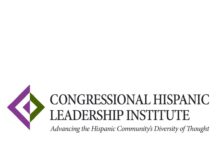Accessibility of English-language Proficiency Tests for English Learners and English Learners with Disabilities
PRINCETON, New Jersey, Dec. 4, 2014 /PRNewswire-HISPANIC PR WIRE/ — As the English-learner population continues to increase in number and diversity in the U.S., the challenge and importance of assessing all students, including students with disabilities, increases as well. A new white paper from Educational Testing Service (ETS) explores issues of accessibility for English learners with disabilities, including test design, delivery, uses in high-stakes accountability and the need for additional research.
Logo – http://photos.prnewswire.com/prnh/20120110/DC33419LOGO
Conceptualizing Accessibility for English Language Proficiency Assessments was written by Danielle Guzman-Orth and Cara Laitusis of ETS, in collaboration with Martha Thurlow and Laurene Christensen of the National Center on Educational Outcomes (NCEO) at the University of Minnesota.
“Assessing English-language proficiency (ELP) is a complicated task given the heterogeneity of that population,” says Stephen Lazer, Vice President of Student and Teacher Assessments at ETS. “This white paper discusses these issues and research considerations to improve the ELP testing experience for all users.”
Nearly every state in the United States has felt the impact of the increasing numbers of English learners (ELs). In 2010, nearly 10 percent of students attending elementary and secondary schools in the U.S. were ELs. In that same year, the number of ELs with disabilities served through an individualized education program ranged from 0 percent in some states up to 31 percent.
The paper is particularly timely given the current mandates from the U.S. Department of Education that explicitly require that ELs with disabilities be included in the general or alternate ELP assessments without exception.
The authors note that attention to accessibility at the early stages of test development and throughout that process can help minimize the effects of construct-irrelevant variance. In their review of current test accessibility and accommodations practice, they identify challenges common to both computer- and paper-based testing; assessing first-time and young test takers; and assessing English learners with disabilities. Specifically, they reference disabilities such as visual and hearing impairments; speech/language impairment; learning disability; autism spectrum disorder; and intellectual disability.
Under the broad category of technology innovations and accessibility, the authors reference the challenges of young test takers and technology novices; handwriting versus keyboarding skills; and computer access and familiarity. They also discuss how administering assessments by computer can provide opportunities for a more standardized approach to delivering student accommodations.
“Accessibility is for all test takers,” says Guzman-Orth, Associate Research Scientist at ETS. “Many of the challenges discussed in this paper apply to ELs with disabilities, as well as the entire range of the K–12 EL population. Students taking ELP assessments can be young kindergarteners or late-arrivals with limited formal educational experiences, so there is a need to broaden the definition of accessibility to include young and first-time test takers including technology novices. And, because of the heterogeneity of this EL population, including ELs with disabilities, it is very important to pay thoughtful attention to defining the construct the assessment is intended to measure and the purposes that the scores are to be used for.”
“We’re seeing the diverse population of English learners increasingly includes those who have disabilities,” adds Thurlow, NCEO Director. “Ensuring appropriate access and accommodations for these students is critical to obtaining valid assessment results.” Christensen, Research Associate at NCEO, says “our paper endorses taking an individualized approach to addressing the diverse needs of students taking an ELP assessment.”
“In our paper, we also raise the need to reconcile the tension between assessment innovations to better measure ELP and the need to be accessible for a wide range of test takers, as required for federal accountability purposes,” explains Laitusis, a Research Director at ETS. “These innovations must include accessibility and accommodations experts from the beginning to identify the challenges and paths to resolution to ensure the assessment innovation can be accessible to all students.”
About ETS
At ETS, we advance quality and equity in education for people worldwide by creating assessments based on rigorous research. ETS serves individuals, educational institutions and government agencies by providing customized solutions for teacher certification, English language learning, and elementary, secondary and postsecondary education, and by conducting education research, analysis and policy studies. Founded as a nonprofit in 1947, ETS develops, administers and scores more than 50 million tests annually — including the TOEFL® and TOEIC® tests, the GRE® tests and The Praxis Series® assessments — in more than 180 countries, at over 9,000 locations worldwide. www.ets.org
About NCEO
The National Center on Educational Outcomes (NCEO) was established in 1990 to provide national leadership in designing and building educational assessments and accountability systems that appropriately monitor educational results for all students, including students with disabilities and English learners. Since its establishment, NCEO has been working with states and federal agencies to identify important outcomes of education for students with disabilities; examining the participation of students in national and state assessments, including the use of accommodations and alternate assessments; evaluating national and state practices in reporting assessment information on students with disabilities; bridging general education, special education, and other systems as they work to increase accountability for results of education for all students; and conducting directed research in the area of assessment and accountability.





